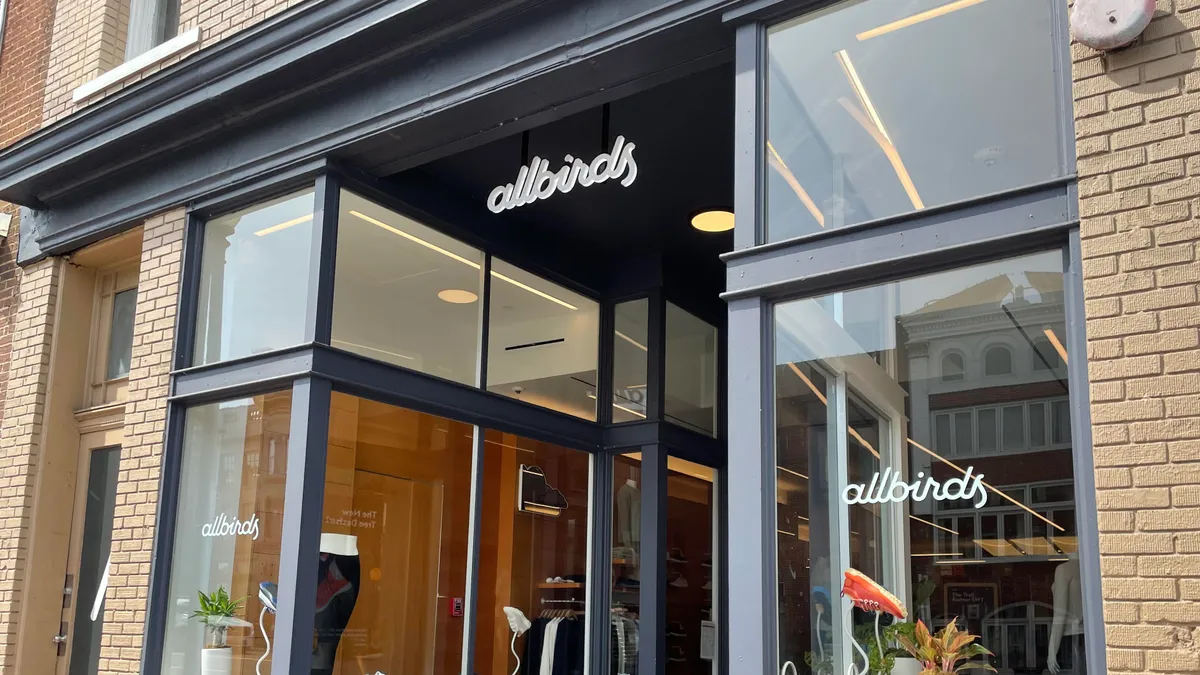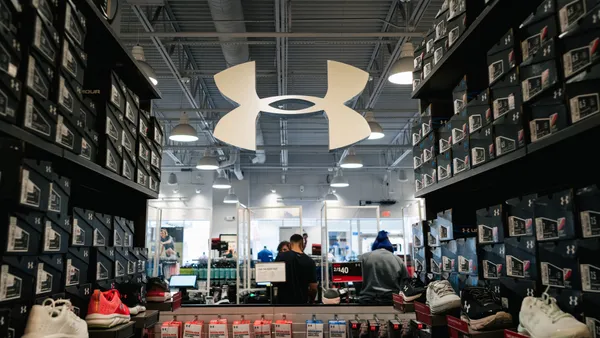Dive Brief:
- Allbirds is the latest to disappoint analysts with Q3 guidance: Net revenue in the period is expected to land between $33 million and $38 million. William Blair analysts noted the company also lowered its full-year revenue guidance by nearly 7%.
- The brand did better than expected in Q2, though net revenue plummeted more than 23% year over year to $39.7 million. Net loss narrowed by 19% to $15.5 million.
- Store closures were largely responsible for the revenue decline and contributed to a 980-basis-point gross margin contraction to 40.7%. Promotions, inventory adjustments from distribution changes in Europe and higher freight and duty costs in the direct business also dinged margins.
Dive Insight:
Speaking to analysts Thursday, CFO Annie Mitchell said the lower full-year guidance “primarily reflects the uncertain macro environment, as well as our decision to close additional stores in Q2.”
Crocs this week similarly announced disappointing guidance for Q3, which Needham analyst Tom Nikic called a “big shock.”
Much of Allbirds’ downward revision reflects an impact of about $20 million to $25 million in costs (up from $18 million to $23 million) related to switching away from a direct selling model to a distribution model in some international markets, plus more U.S. store closures, according to a company press release. As at Crocs, though, the economy is a major factor.
“A more significant portion of the downward revision is a result of broader macro uncertainty as likely price increases from tariffs could weigh on broader demand patterns (a common theme this earnings season),” William Blair analysts led by Dylan Carden said in a Friday client note regarding Allbirds.
Overall visits to Allbirds stores in Q2 declined 12.5% year over year but much of that was due to closures, as visits per location surged more than 18%, according to data from Placer.ai. Indeed, the shuttered stores and distribution changes are clouding the company’s picture: Stripping them out indicates “a clearer improvement in the business,” Carden said. That includes going from a mid-20s percent sales decline in Q1 last year to just a 6% decline in the current quarter.
“Meanwhile, the third-quarter guide assumes things get worse before getting better, which implies some conservatism,” Carden said. “The rubber hits the road by the fourth quarter.”
Beginning in August and continuing through 2025, the brand is dropping new products monthly and new marketing weekly, CEO Joe Vernachio told analysts.
“We are confident in what the future holds as we turn the page on a new era of growth,” he said. “The current macro environment creates some uncertainty around consumer spending — but it does not change our conviction in the work we have done and the compelling product, marketing and customer experience we’re bringing to the market.”
Allbirds’ turnaround has centered on changes like the distribution switch and store closures, but its success ultimately depends on these fresh releases, starting this fall, according to GlobalData Managing Director Neil Saunders.
“Overall, while the numbers are still poor, there are signs that Allbirds is becoming more disciplined in how it operates,” he said in emailed comments. “That’s encouraging. But the real issue remains one of consumer relevance. Until Allbirds fixes its product and proposition its business model will remain questionable.”















